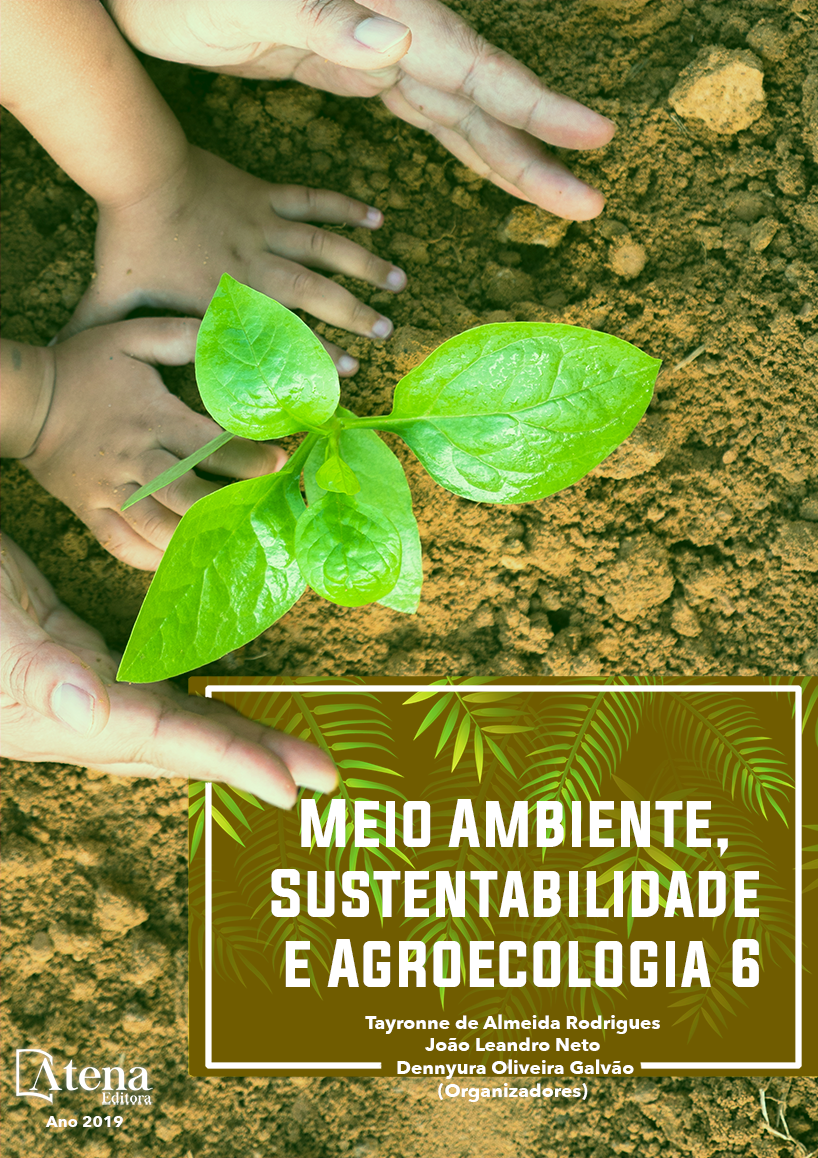
CARACTERIZAÇÃO QUALITATIVA DE SOLOS ATRAVÉS DE CROMATOGRAFIA DE PFEIFFER EM AGROECOSSISTEMAS
O desenvolvimento da tecnologia
de estudo da qualidade do solo tais como a
Cromatografia de Pfeiffer se torna de grande
utilidade para os agroecossistemas manejados
de acordo com os princípios agroecológicos, por
ser de fácil entendimento, baixo custo e abordar
aspectos relativos a movimentação da vida do
solo. O objeto da proposta foi avaliar o uso da
Cromatografia do solo de Pfeiffer como indicadora
da qualidade dos solos de agroecossistemas
de base familiar e de um ecossistema florestal.
O trabalho foi realizado no município de
Solânea-PB, em seis agroecossistemas de
base familiar e no ecossistema floresta. Foram
coletadas em campo sete amostras composta
por solos de 0 à 15 cm e levadas ao laboratório
de Agroecologia (ASDA) para realização da
prática da Cromatografia. Para a análise das
Cromatografias, foram utilizadas categorias
qualitativas observando suas zonas, cores e
formas, expressas através de semáforos com
cores distintas e legendas. Os resultados das
avaliações cromatográficas indicam que houve
diferenças de qualidade entre os solos estudados
dos agroecossistemas, sendo classificados na
categoria suficiente com os semáforos apontando
cor predominantemente amarela variando entre
o vermelho e verde. Somente a floresta foi
classificada como categoria excelente, obtendo
todos os semáforos verdes. Conclui-se que a
Cromatografia de Pfeiffer é uma técnica que
pode ser utilizada para avaliação qualitativa
do solo tanto de ecossistemas naturais quanto
agroecossistemas, sendo de simples manuseio
técnico e baixo custo, mostrando-se como uma
alternativa à avaliação de solos por agricultores
CARACTERIZAÇÃO QUALITATIVA DE SOLOS ATRAVÉS DE CROMATOGRAFIA DE PFEIFFER EM AGROECOSSISTEMAS
-
DOI: 10.22533/at.ed.34719160421
-
Palavras-chave: avaliação qualitativa, saúde do solo, unidades produtivas.
-
Keywords: The development of technology for the study of soil quality such as Pfeiffer’s Chromatography becomes very useful for agroecosystems managed according to agroecological principles, because it is easy to understand, low cost and address aspects related to the movement of life from soil. The objective of the proposal was to evaluate the use of Pfeiffer Soil Chromatography as an indicator of the soil quality of family - based agroecosystems and a forest ecosystem. The work was carried out in the municipality of Solânea-PB, in six family-based agroecosystems and in the forest ecosystem. Seven samples composed of soils from 0 to 15 cm were collected in the field and taken to the Agroecology Laboratory (ASDA) to perform the Chromatography practice. For the analysis of the Chromatographies, qualitative categories were used observing their zones, colors and forms, expressed through semaphores with distinct colors and legends. The results of the chromatographic evaluations indicate that there were differences in quality among the studied soils of the agroecosystems, being classified in the category sufficient with the traffic lights pointing predominantly yellow color varying between red and green. Only the forest was classified as excellent category, obtaining all the green traffic lights. It is concluded that Pfeiffer’s Chromatography is a technique that can be used for qualitative evaluation of the soil of both natural ecosystems and agroecosystems, being of simple technical handling and low cost, showing itself as an alternative to the evaluation of soils by farmers.
-
Abstract:
The development of technology for the study of soil quality such as
Pfeiffer’s Chromatography becomes very useful for agroecosystems managed
according to agroecological principles, because it is easy to understand, low cost
and address aspects related to the movement of life from soil. The objective of the
proposal was to evaluate the use of Pfeiffer Soil Chromatography as an indicator of
the soil quality of family - based agroecosystems and a forest ecosystem. The work
was carried out in the municipality of Solânea-PB, in six family-based agroecosystems
and in the forest ecosystem. Seven samples composed of soils from 0 to 15 cm were
collected in the field and taken to the Agroecology Laboratory (ASDA) to perform
the Chromatography practice. For the analysis of the Chromatographies, qualitative
categories were used observing their zones, colors and forms, expressed through
semaphores with distinct colors and legends. The results of the chromatographic
evaluations indicate that there were differences in quality among the studied soils of
the agroecosystems, being classified in the category sufficient with the traffic lights
pointing predominantly yellow color varying between red and green. Only the forest
was classified as excellent category, obtaining all the green traffic lights. It is concluded
that Pfeiffer’s Chromatography is a technique that can be used for qualitative evaluation
of the soil of both natural ecosystems and agroecosystems, being of simple technical
handling and low cost, showing itself as an alternative to the evaluation of soils by
farmers.
-
Número de páginas: 15
- David Marx Antunes de Melo
- Eduarda Fernandes dos Reis
- Thiago do Nascimento Coaracy
- Gabriel Torres Rodrigues
- Alex da Silva Barbosa
- Alexandre Eduardo de Araújo


